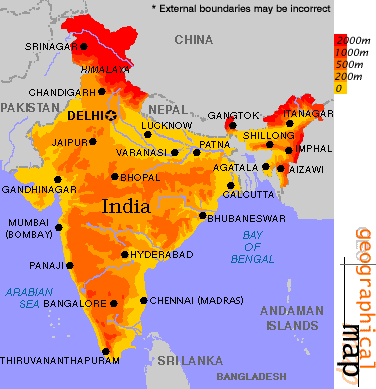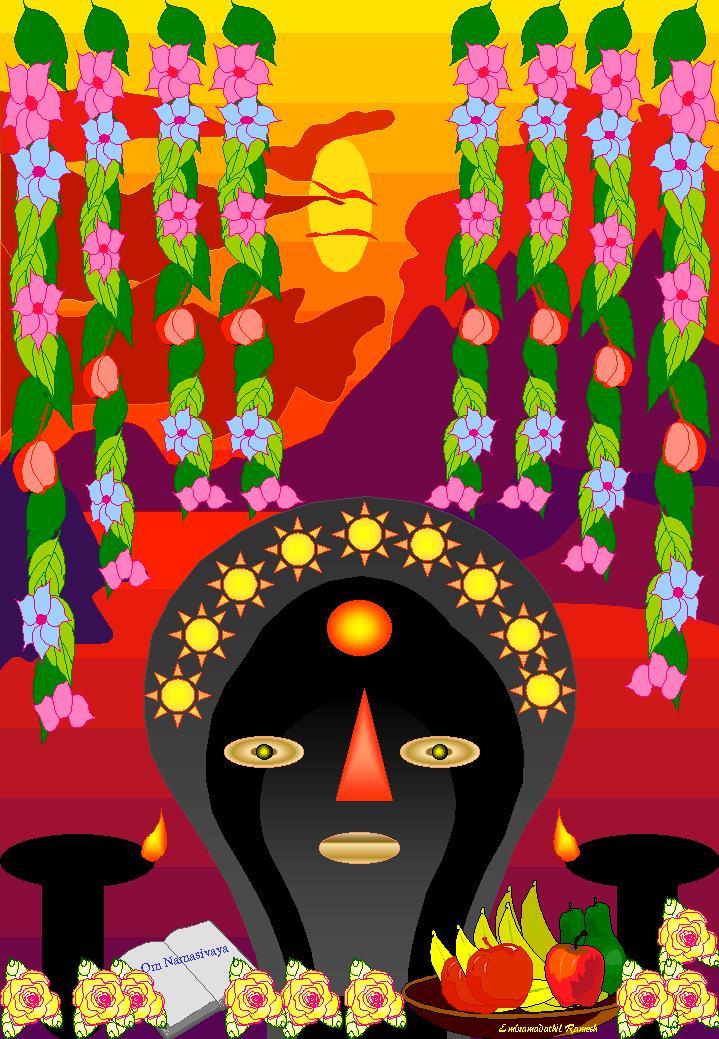| From hymns in the Rg-veda to the Hindu nationalist's present day depiction of "Bharat Mata" (Mother India) in an immense museum / temple in Hardiwar, the Goddess and the divine feminine have been identified with the earth, the entire cosmos and with the Indian subcontinent itself. (David R. Kinsley, Hindu Goddesses: Visions of the Divine Feminine in the Hindu Religious Tradition, 178) In India, the Himalayas and the Ganges, like all mountains, rivers and geographical features, are regarded as sacred sites from which divine power emanates. "India," says David Kinsley, "is the Devi's living body". (Hindu Goddesses: Visions of the Divine Feminine in the Hindu Religious Tradition, 187) |
 |
|



